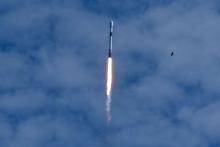Sky High Promises: The Limits of Starlink - Episode 657 of the Community Broadband Bits Podcast

In this episode of the podcast, Sascha Meinrath returns to unpack the mythology surrounding Starlink and similar “miracle” broadband solutions.
He and the CBN team (Chris, Sean, and Ry) dive into how overhyping space-based Internet distracts from building reliable, ground-up infrastructure that communities actually need.
From confusing speed metrics to misleading policy narratives, they explore how Starlink has become a tech mirage—promising abundance while leaving many still unconnected.
This show is 49 minutes long and can be played on this page or via Apple Podcasts or the tool of your choice using this feed.
Transcript below.
We want your feedback and suggestions for the show-please e-mail us or leave a comment below.
Listen to other episodes or view all episodes in our index. See other podcasts from the Institute for Local Self-Reliance.
Thanks to Arne Huseby for the music. The song is Warm Duck Shuffle and is licensed under a Creative Commons Attribution (3.0) license


